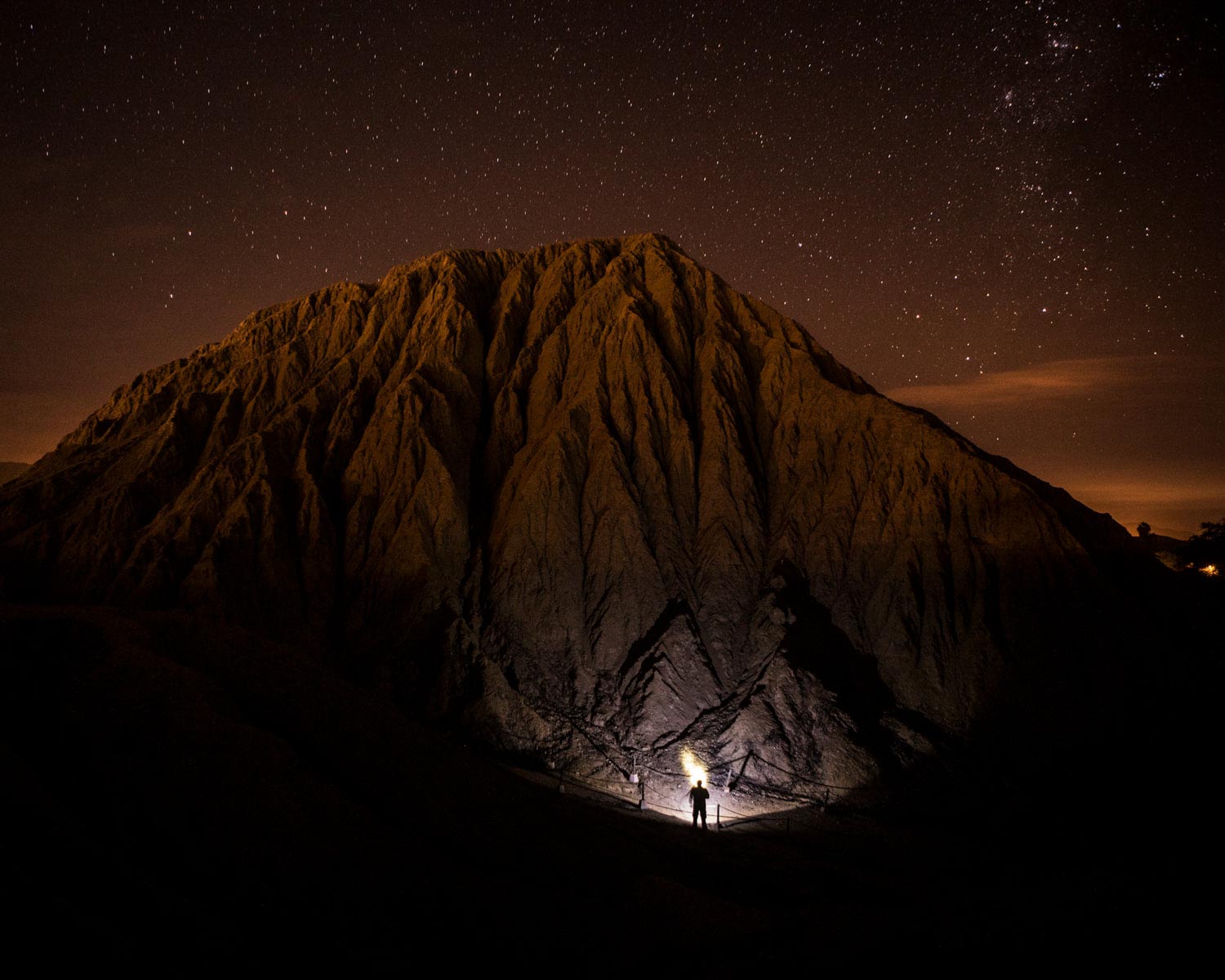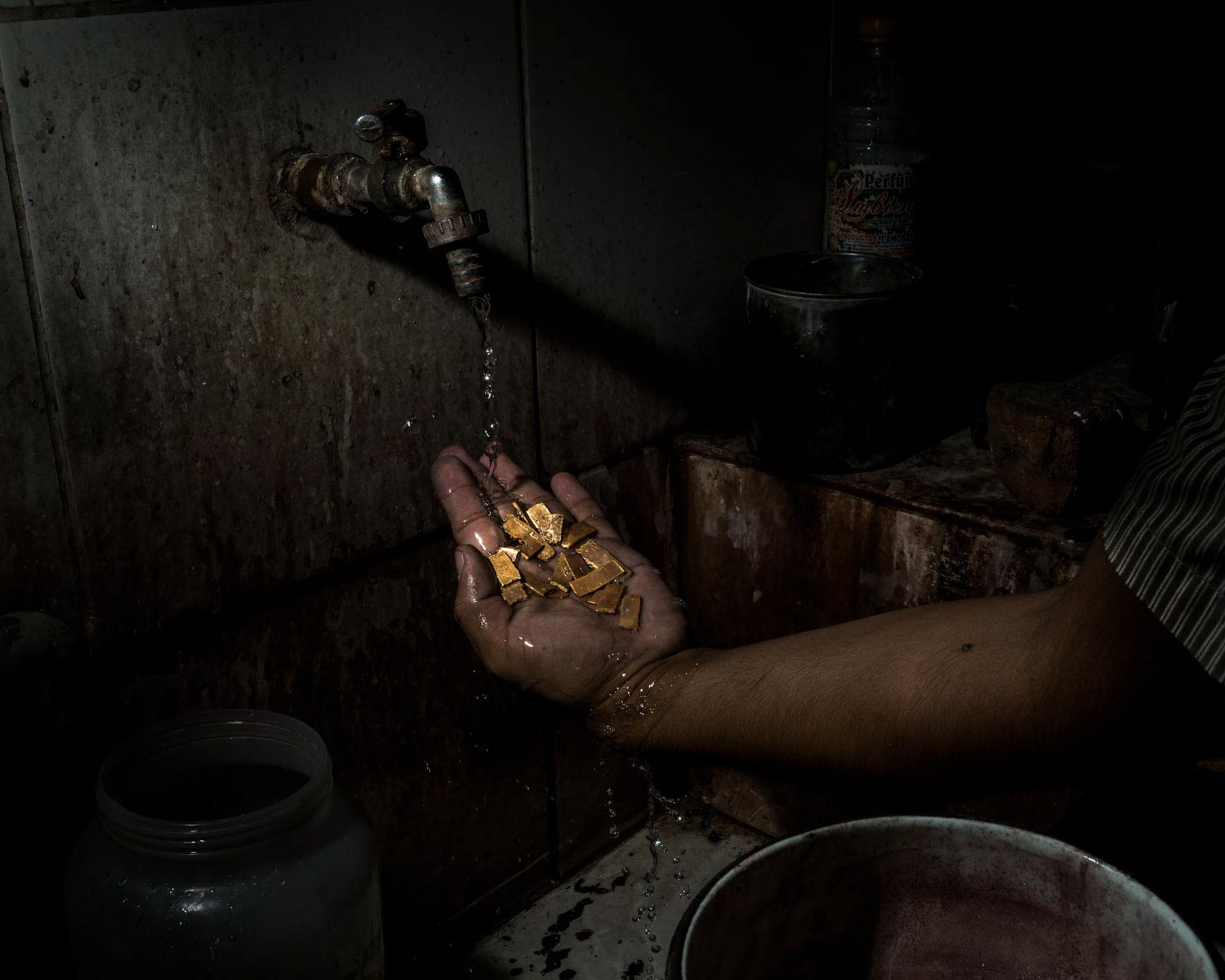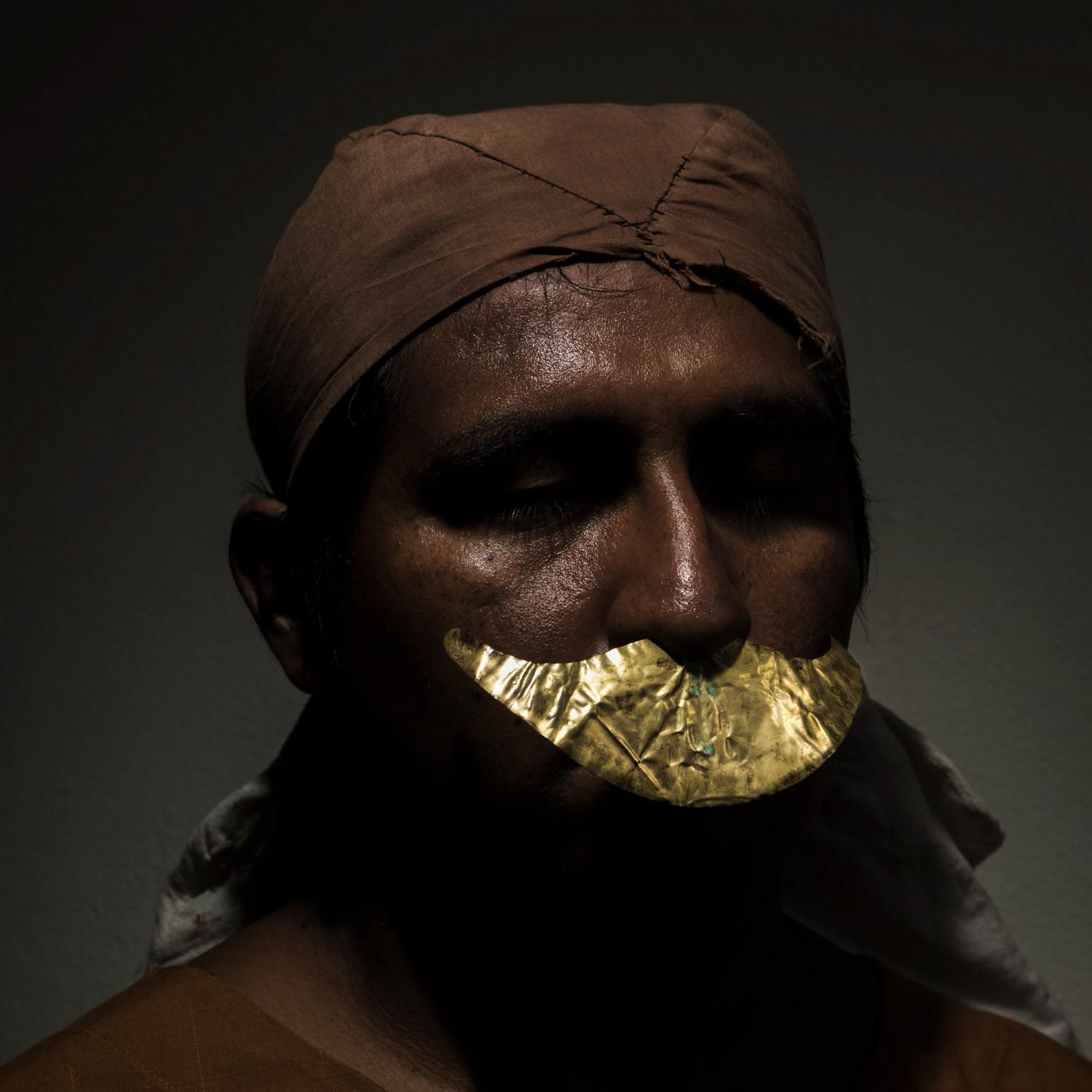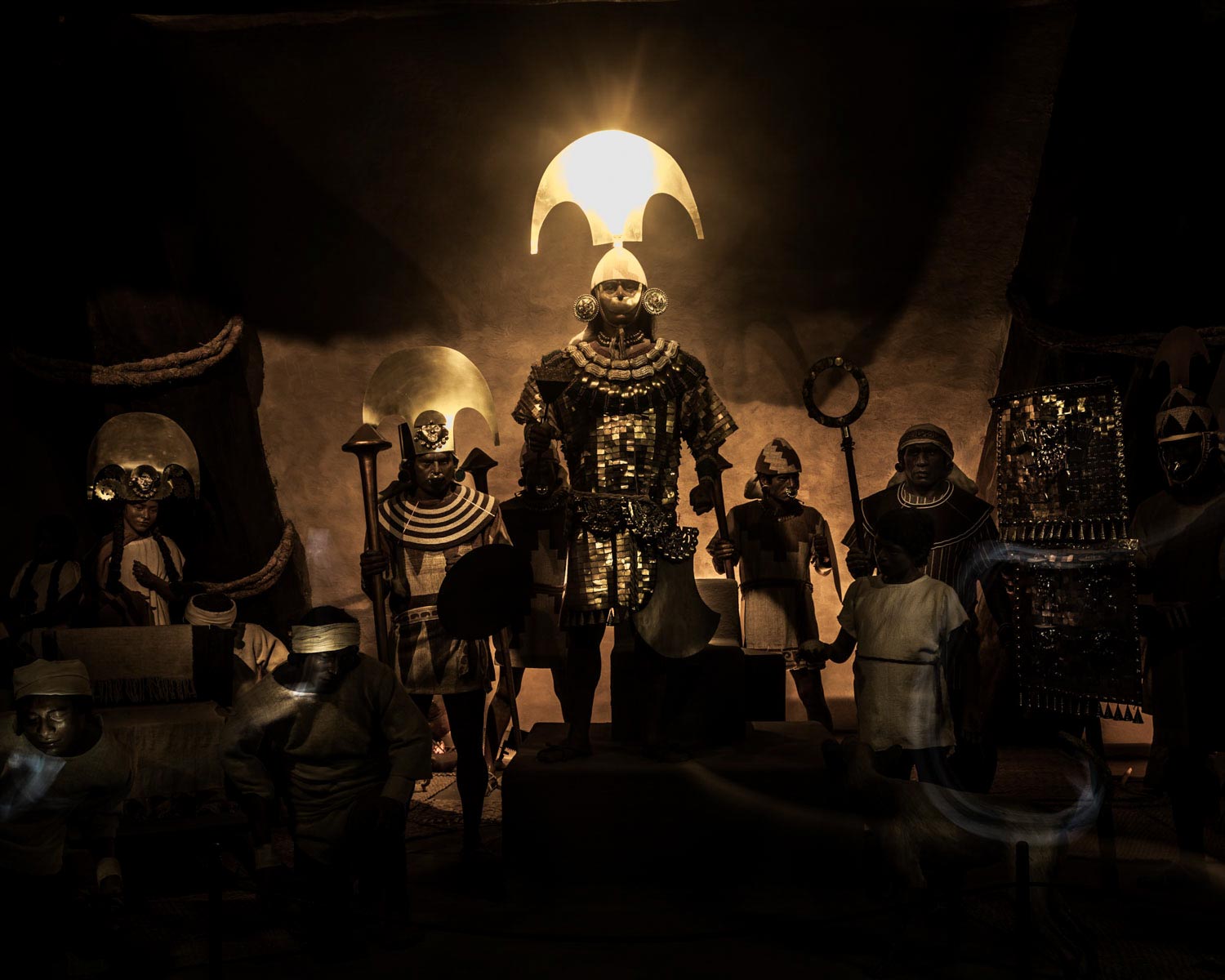
The dark side of gold
Peru is the country that produces the most gold in Latin America. The history of this exploitation began long before the arrival of the Spaniards, but with the conquest and colonization, the relationship with the metal changed. Now is large-scale extractivist exploitation, in which gold is another commodity that moves the world. Peruvian photographer Marco Garro decided to explore this history by covering three historical moments in three geographical areas of the country.
By Marcela Vallejo
Gold mines are also mines of stories. In some places, one of the most important characters is the devil. In others, it is a fortune. Peru, the largest gold producer in Latin America, still has a very abusive form of worker exploitation. It consists of “Cachorreo”: “you work for free for a certain amount of time,” says Peruvian photographer Marco Garro, “so that after a week or two weeks of working for free, they give you one or two days to be able to enter and extract as much gold as you can. It’s like a kind of modern slavery.”
The question that we all ask ourselves and that the photographer asked the miners is: how do you know if you are going to find gold on those days? “Some told me that there were many stories about fortune, of miners that from one day to the next, in one of those two days, they found a lot of gold, or that while digging a rock of a kilo of gold fell on them. Other stories told that they had found and hid a vein to exploit it in those days that the Cachorreo allowed them.”
All this happened in places of illegal extraction, where miners work in precarious conditions, and where there is human trafficking. But also where miners share the feeling that there are no other options. That, perhaps, is an idea that also surrounds other mining areas. Many know the impact of this activity, but it feels like an inevitable destiny.

Peru has been the largest gold producer in Latin America since 1995; since 2006, it has ranked sixth in the world. It is estimated that between 1496 (the time from which records are kept) and 2013, 117.7 million ounces have been extracted in the country, something like 3,336 tons. Today, this product represents 60% of Peru’s total exports. The importance of this metal is undeniable, and its history has crossed the history of this territory. However, some darkness and mystery surround the production of gold, which has been the subject that has most interested the Peruvian Marco Garro.
Garro has spent several years researching and photographically documenting mining in his country. The interest was born when he had the assignment to visit Cerro de Pasco, a mining settlement 290 kilometers from Lima. “It is a city whose inhabitants have big problems with lead contamination in their blood, and there is a lot of environmental pollution,” says Marco. What struck him the most was that until that moment, he did not know of the existence of Cerro de Pasco.
How was that possible if it was close to home and he was relatively knowledgeable? This discovery led him to investigate other mining cases in his country. Thus, he has developed projects on childhood in mines, and the transformation of natural and social landscapes, the highest mine in the world.
In 2018 he started El oro que heredamos, el oro que soñamos, a project focused on different facets of this metal. The photographer was learning how the various inhabitants of what is now his country had had different types of relationships with gold throughout history, concentrating on three moments: pre-Columbian times, when gold had a sacred and ritual character; colonization, when gold began to transform into a commodity; and the present time, when gold is a resource of legal and illegal exploitation.

Garro looked for these “temporalities” in three different places. For the relationship established with gold in pre-Hispanic times, the photographer went to northern Peru, the cradle of the Moche civilization. “They were the great metallurgists of ancient Peru. They used gold in a sacred way as an element of representation of divinity.”
Then, he went to Cusco, where he worked on the theme of the Conquest and Colony. “I was interested in seeing how gold began to be woven into the Hispanic and Inca culture. Evangelization, one of the conquest’s elements, used gold leaf in their sacred images.” The last part, where he worked on modern gold mining, was done in the Peruvian Andes and Amazon.
Garro’s research revolves around gold in extractive terms. For him, the form that legal or illegal mining has taken in his country implies a cultural shock. “Land in Peru has a super strong ancestral meaning,” he explains. “In indigenous cultures, you can extract from the land to give it a blessing or a gratification. In other words, there is an exchange. But resource extraction is extracting and extracting and not giving anything in return. I am talking about gold extraction, but there is also silver, zinc, lead, and oil. These are important elements of our daily life, which always surround us, but they have a dark side. And that’s what I like to explore.”




